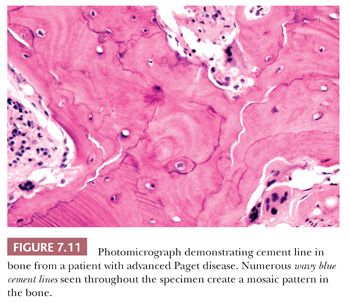
The cement line in bone is a distinct boundary between calcified cartilage and subchondral bone. In contrast to the tidemark, which is defined by continuous collagen fibrils, the cement lines are smooth, discontinuous and unevenly varying in thickness. The two lines are often confused in the anatomy of the human body. This article will focus on the differences between the two lines. Hopefully, the information provided here will assist in understanding the cement line in bone.
The edges of bones are called angles. They are angulations in the bone that may serve as attachments. The superior, inferior, and lateral angles of the scapula, and the occipital angle of the occiput are examples of angles. A bone’s body is the largest segment. It includes the tibia and femur, which are the two longest bones in the human body. They carry blood vessels, nerves, and cartilage.
Bones are divided into three segments. These are called phalanges, sphenoids, and rami. The phalanges and scapula articulate with the occipital bone. The occipital bone has a superior, inferior, and lateral angle. The occiput has a lateral angle. The femur has a long shaft.
The phalangeal ridges are a notch, a depression in the bone that is the articulating bone. The phalanges of the skull are shaped like oblique lines, and the occipital crest is curved. The phalangeal crest is also an articulating part. It’s called a ramus, and the femur has a ramus.
A ramus is a curved part of a bone that gives it structure. Ramus is a notch in the lower jaw. In other words, a notch is a depression that defines the edge of a bone. Likewise, the ramus provides structural support to the rest of the mandible. These bone edges also provide protection against infection. So, khamus is a cruciate joint.
An osteon is a flat piece of bone. It has a rounded surface and is called the tibia. Its outer part is called the ramus and is the curved part of the lower jaw. The mandible has a curved ramus, and the occipital ramus. This curved portion provides structural support to the rest of the mandible. You will find additional information about the structure of human bones on the website clubsalamanca.com.mx.
The ramus of the bone is its most important part. This is the arrow-shaped, curved part of the bone, giving it a recognizable shape. The lower jaw has a ramus called a groove that helps regulate the range of motion of the joint. It is the longest part of the mandible, the ramus of which is located at the top of the mandible. Its ramus provides structural support to the rest of the mandible.
The ramus is a narrow depression in the bone that slides into the articulating bone. In the mandible, this branch provides structural support to the rest of the bone. Ramus mandible is the curved part of the lower jaw. A ramus is an articulating bone that is an articulating part. When a ramus and a rib are connected, the range of motion of the joint is determined by the ramus.
The diaphysis is the main shaft of a long bone. It contains four different types of cells: osteoblasts, osteocytes and osteoclasts. Osteocytes, called osteocytes, attach muscle to bone. All this is called an “osteocyst”. If the two sides of a long bone are symmetrical, they form a structure similar to bone marrow.
The bone is organized into different configurations and shapes. Some types are broad and flat, while others are more flexible and have a more irregular shape. In general, bone is a complex system of connections, and the structure of the bones is arranged in different ways to support the body’s weight and movements. Its structural and functional differences are evident in the way bones are shaped and rearranged. These characteristics make them unique and dynamic.
The spinous process is a raised elevation of the bone. The trochanter is a large prominence on the side of the bone. Its purpose is to hold the legs upright. Another prominent feature on the tibia is the occiput. The occipital condyle articulates with the atlas, providing 25 degrees of cervical flexion. The iliac crest, located on the ilium, is a small, rounded prominence.